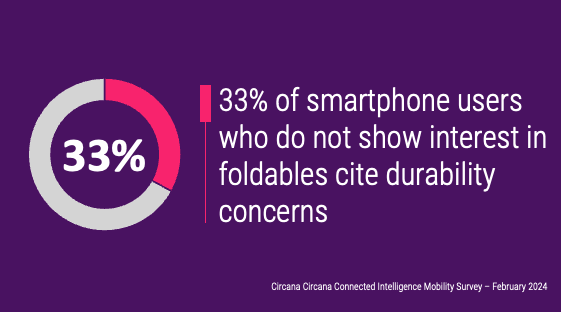
Samsung unwraps the latest foldables
Samsung unveiled the highly anticipated Galaxy Z Fold 6 and Z Flip 6, marking another milestone in the evolution of foldable smartphones, though the annual launch event was hijacked by its new health-centric wearables like the Ring. The Z Fold 6 closely mirrors its predecessor, the Z Fold 5, in design, though it boasts several significant upgrades in performance, durability, and user experience. The new Z Fold 6 features a 7.6-inch main flexible display, which is not only brighter but also more durable than the Z Fold 5 as it gets IP48 water and dust resistance rating thanks to the new hinge design. The outer screen gets a mere 3mm bump from its predecessor, but is still narrower than a regular smartphone. The new Galaxy Z Fold 6 is also equipped with Google and Samsung’s latest AI features. The new Samsung Galaxy Z Flip 6 similarly boasts notable upgrades such as improved silicon and camera lenses as well as a vapor cooling chamber inside the chassis. Notably, both phones come with Samsung’s seven-year OS security and update commitment (thanks to Google for paving the road to seven-year updates).
Both phones have “starting at” price tags ($1900 on the Z Fold 6 and $1100 on the Z Flip 6) that are $100 higher than their predecessors. The phones became available for pre-orders on July 10th and will commercially ship on July 26th. Notably, as in the case with all Galaxy flagships, customers pre-ordering the phone will receive a free storage upgrade (a $120 or $240 savings depending on the model).
The Circana Take:
- It is hard to criticize Samsung for its pricing move considering the limited reach of foldable smartphones. These new models are Samsung’s sixth attempt at the foldables category, and we have yet to see a notable increase in the addressable market of foldables despite attractive subsidies from carriers. The $100 price hike is not going to be a turnoff for the small niche of users that show interest in the phone, though it will surely help Samsung’s margins.
- The addition of IP48 water and dust resistant rating is a major accomplishment for Samsung as durability concerns have long remained a distractor for consumers. According to Circana’s Connected Intelligence Mobility survey (February 2024), 33% of consumers who are not interested in the foldable space have cited durability concerns as a reason for their lack of interest.
- Circana’s point-of-sale data from national retailers shows that Samsung’s new foldables typically enjoy a notable bump in sales in July/August (~7% volume share) when the phones are released followed by a quiet period for the rest of the year (~1% volume share). Despite the improvement in hardware and software, we do not expect to see a substantial difference in demand for the new models when they are commercially available later in the month.
- Samsung’s decision to debut the phone in July rather than in August is strategic as it has allowed the company to take full advantage of the marketing opportunities during the Olympics games that will start in late July. Samsung has created an exclusive “Olympics Edition” of the Z Flip 6 for all the 17K athletes competing at the Paris 2024 Olympics. The earlier than usual debut is also a good opportunity to stay out of the marketing shadow of the upcoming Apple iPhone introduction in mid-September.
- The inclusion of a vapor cooling chamber in the Z Flip 6 was not mentioned much during Samsung’s release of the phone, but it addresses a crucial issue consumers dealt with on the predecessor Z Flip models, which were overheating during the use of applications that required high performance processing.
Verizon rebrands the rebranded Total brand
The title of our article may sound confusing, but that is exactly what Verizon has done, reverting back to the origins of the Total brand. When Verizon acquired Tracfone back in November 2021, Total Wireless was one of the several brands included under the Tracfone umbrella, and it was Verizon’s first pick for a rebranding effort. The carrier rebranded Total Wireless as Total by Verizon and changed the color schemes from green to Verizon’s classic red color. Less than two years later, the carrier decided to rebrand back to Total Wireless by dropping the Verizon reference but maintaining the red color scheme.
The Circana Take:
- Verizon’s initial rebranding effort was a risky move given the user demographics of Tracfone brands, especially Total Wireless, which skews towards the lower end of the income scale. According to Circana’s Mobile Tracking Survey, 75% of Total Wireless users have a household income under $75K, compared to 63% for the average prepaid customer. For these users, cost is the primary concern, outweighing factors like network strength and the superiority implied by the “by Verizon” reference.
- Verizon took a page from T-Mobile’s playbook, which successfully brought the MetroPCS brand under the T-Mobile umbrella (Metro by T-Mobile). However, Verizon’s effort seemed rather rushed. Adding the industry’s most premium brand (Verizon) to a modest prepaid brand (Total) with limited distribution and a highly elusive customer base was unlikely to yield the best results, hence the rebranding back to Total Wireless.
- The rebranding includes several significant marketing moves such as price locks, free 5G phone offers, and additional phone subsidies based on tenure. We are particularly pleased to see Total Wireless emphasizing fast data speeds — the main page features downlink speed comparisons with other carriers. According to Circana’s Mobile Connectivity survey, slow data speeds (often due to throttling) are the main reason premium prepaid customers churn to postpaid services.
- The Total Wireless rebranding follows a fundamental and unexpected brand overhaul at Verizon a couple of weeks ago, when the carrier changed its logo and color scheme and launched a new advertising campaign dubbed “Now”. These bold moves reflect the new marketing leadership, and we expect Verizon to benefit significantly from these efforts in terms of reduced churn and subscriber growth.


